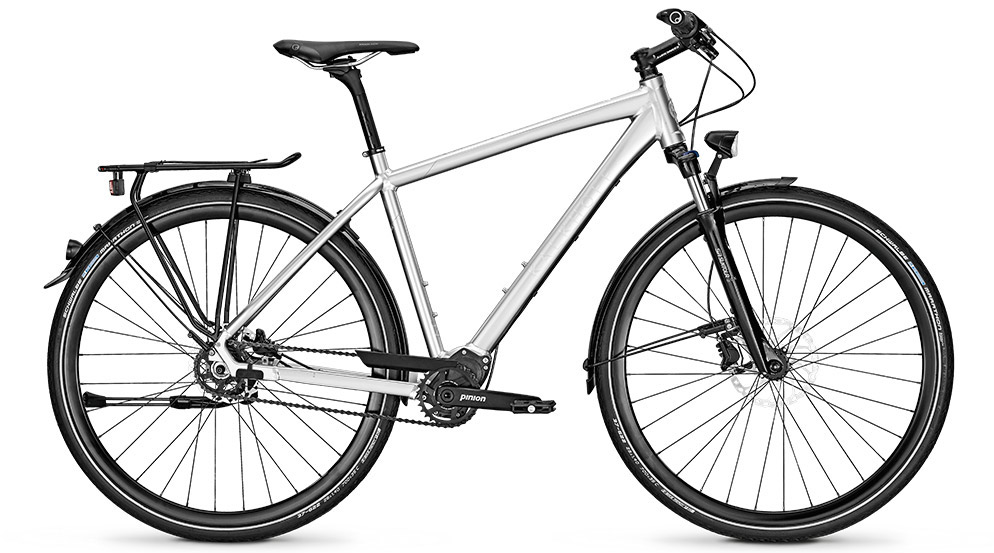Derailleurs are great.
Well, most of the time--for me, anyway. With the exception of Tosca, my Mercian fixed-gear, my other "fun" bikes have derailleurs on them. Cyclists have been using them for nearly a century; in that time, derailleur-equipped bikes have gone from having two cogs to eleven on the rear wheel. (When I first became a dedicated cyclists, five in the rear was normal; six-speed freewheels were new and exotic
I think 8 rear gears is the "sweet spot" where a wide range of gear options intersects with relative durability and un-fussy shifting; 9 gears--which I use--sacrifices a bit of chain life but greater availability of cassettes across a wider selection of gear ratios and price ranges.
Aside from Tosca, I have one other derailleur-less bike: my commuter/"beater", which has a single-speed freewheel. Most commuters here in New York don't have to negotiate many, if any, hills. I myself make one climb of any significance on my way to work in the Bronx.
Now, if you don't have to ride hills or are very young or strong, a single-speed bike is a great option if you want to do as little maintenance as possible. If you're really young and strong, or a messenger, (I was all of those.)you might even like a fixed-gear single-speed. (At times, I have commuted on a fixed-gear and, as I've mentioned in other posts, I've been a messenger.) But if you're not-so-young or athletic, live in a hilly area or simply want to sweat as little as possible, you might prefer a variable-gear bike.
If you want variable gears but don't want to use derailleur, you only other option--at least, if you live here in the US--is an internally-geared hub. The most familiar kind is the classic three-speed. Sturmey-Archer made several models, but by far the most popular (or at least common) was their AW, which came on the Raleigh, Dunelt, Robin Hood and other English bikes. Shimano, Sachs and a few other companies also made them; the one marketed by SunTour during the 1960's and early '70'd has long been rumored to be a re-badged Sturmey-Archer.
The problems with those hubs are that they don't offer a wide variety of gears, the spacing between gears is less-than-optimal and, with the exception of the old (pre-1975 or thereabouts) Sturmey-Archer models, they tend to wear out quickly. Moreover, they don't transmit power (turn your pedal strokes into wheel revolutions) very efficently and weigh significantly more than a hub with a cassette or freewheel combined with derailleurs.
Worst of all, if riders neglect (as most do) even the minimal maintenance internally-geared hubs require, they can fall to the ravages of rain, wind and other elements almost as easily as the exposed parts of a derailleur.
For some time, European commuters and utility cyclists have had another option: a gear box.
The German-made Pinion gear box is a standard feature on about 90 different bike models sold in Europe. It is a rarity in the US, but that could change: The company is opening an office in Denver in conjunction with Gates, the manufacturer of the Carbon Drive System.
Think of Pinion as an internally-geared hub on your bottom bracket: The box contains a set of epicyclic gears, like the ones inside the hub, in an oil bath. But, unlike the hubs, which had oil caps on their shells, Pinion requires an oil change every 10000 km or so. The good news is that Pinions appear to be more hermetically sealed than internally-geared hubs, so the lubrication is less prone to contamination and, one assumes, runs more smoothly.
 |
| Add caption |
The main downside to Pinion is, apart from its weight, the fact that it can be installed only on a Pinion-specific frame. For some, that limitation is counter-balanced by its greatly reduced maintenance, ease of shifting and the fact that it's available in a number of gear configurations, with 6,9,12 or 18 gears in a range from 295 to 636 percent. This means a wider range of gears, with narrower steps in between, than is possible in an internally-geared hub. It's also available with a die-cast magnesium gear box, which cuts the weight somewhat, in addition to standard aluminum model.







